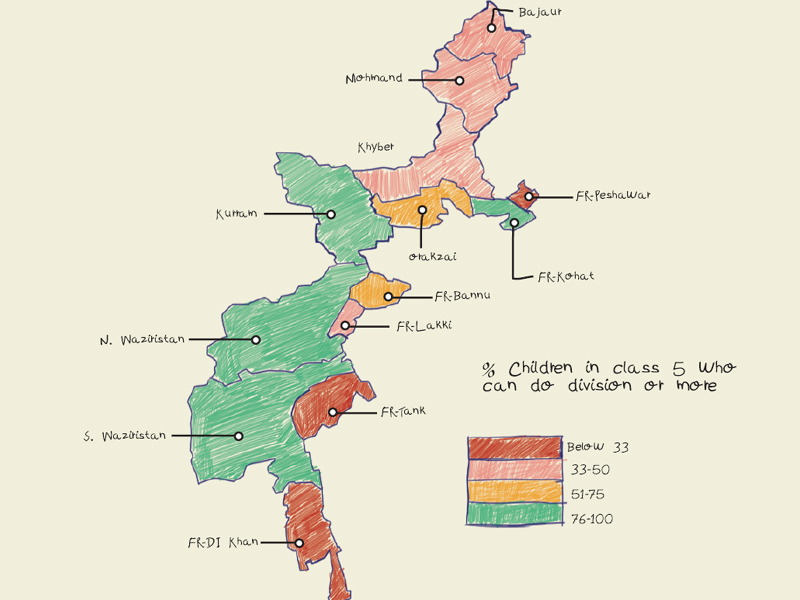
‘For every 20 children in class one, only three are in class 10,’ states the Annual Status of Education Report (Aser) 2012, drawing attention to the bleak outlook for students in the Federally Administered Tribal Areas (Fata)
The Aser examined four agencies and five Frontier Regions (FR) in Fata. These comprised 5,375 households, 18,434 children between the ages of three and 16 (64% male and 36% females) and 313 schools. FR Kohat, and Kurram, North Waziristan and South Waziristan agencies, however, could not be surveyed.
Children between the ages of six and 16 are still facing access problems, with 25.3% out of school. Out of those 21.5% have never been enrolled and the remaining dropped out.
Unfortunately, preschoolers fare much worse according to the 2012 report, almost 66% of children between the ages of three and five are not receiving preparatory education.
Perhaps these numbers do not come as a surprise since schools in Fata remain under constant militant threat. According to a news report, over 100 schools have been destroyed by militants in Mohmand Agency. The same report states 208 schools were attacked in Bajaur, Khyber and Orkazai agencies. All four agencies have been surveyed by the Aser 2012.
School enrolment dips progressively as children grow older – from 20% enrolled in class one to 3% in class 10. A similar pattern was seen last year in Fata and, in 2012, in the rural areas of Khyber-Pakhtunkhwa but not in the city of Peshawar.
Although more class five students could read level two text in Urdu/Pashto in 2012, that 2.2% in the same class were not even able to read letters or words shows the dire straits education in Fata finds itself in.
Out of all school-going age children, 41% of the boys could solve at least subtraction problems compared with 21% girls who could do the same. Similar results were seen for children who could at least read words in English.
Only 4% of the mothers surveyed had completed primary education. Though fathers’ fared better, just 36% were educated to the same level.
Another disadvantage faced by female students was a total lack of girls’ private schools whereas out of the 258 government schools surveyed, there were at least 35 single-sex schools for girls. Though it should be noted, out of 55 private sector schools, 41 were co-educational institutes.
The researchers at Aser say although overall female enrolment [all over K-P and Fata] is low, it has been improving marginally.
Education Sector Reform Deputy Director Farid Khattak says one way to overcome gaps in education is community involvement. “We want to involve the community. We need public ownership, we cannot progress without that. The government provides electricity, teachers, buildings and now it is trying from the very beginning to motivate the public to include them.”
Published in The Express Tribune, February 25th, 2013.


























1714024018-0/ModiLara-(1)1714024018-0-270x192.webp)











COMMENTS
Comments are moderated and generally will be posted if they are on-topic and not abusive.
For more information, please see our Comments FAQ